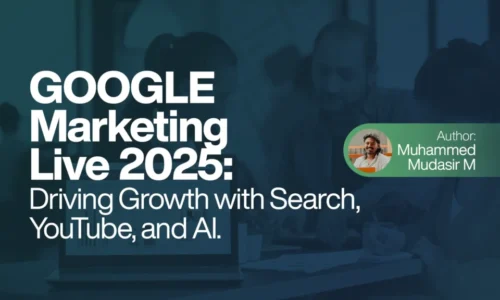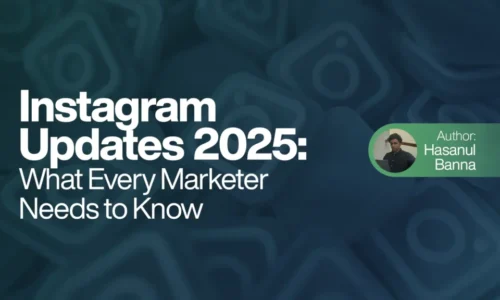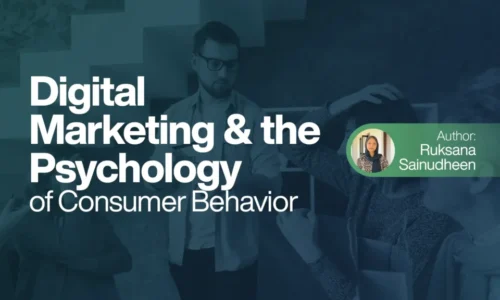Unlocking the Future: How Digital Marketing is Redefining Traditional Strategies
The fast-paced digital world is witnessing a constant evolution of marketing strategies among its clientele. Digital marketing became a true game changer from traditional marketing. With things like exploiting data-driven insights and real-time audience engagement, digital marketing alone surpasses any other method. This blog explores how digital marketing is changing the face of traditional strategies and why adjustment to these strategies is vital for businesses to survive in the present marketplace.
Table of Contents
Definition of Digital Marketing
Online marketing involves promoting brands, products, or services across digital channels such as search engines, social media, email, and websites. In essence, digital marketing is making it easier for brands to reach their audience and analyze the success of their campaigns via data analytics.
Evolution from Traditional to Digital
Across the decades, marketing has undergone an impressive metamorphosis. Old-school strategies such as print-media advertising, commercials, and billboards have given way to new-age communicative techniques such as social media campaigns, influencer marketing, and SEO. Change came about primarily due to consumer behavior and technologic evolution.
Importance in Today’s Marketplace
With billions turning online daily, digital marketing is becoming indispensable for businesses to gain an edge in competition. Its offerings include inexpensive, scalable, measurable solutions for brands to attract larger audiences while helping them build trust and drive conversions.
The Shift from Traditional Marketing to Digital Platforms
Changes in Consumer Behavior
- The Trend of Online Shopping
In this era of e-commerce, the traditional way of shopping has faded away. Consumers are doing thorough research on products, reading reviews, and finally making purchases online. From this, we can understand that digital marketing has become an important area in influencing buying decisions.
- Social Media Influence
Social media platforms like Facebook, Instagram, and TikTok play an essential part in determining consumer choice. Brands use these platforms to engage users and promote their products.
- Instant Need for Information
Consumers expect instant information, and digital marketing provides this through blogs, live chats, and customer support.
Cost-Effectiveness of Digital Marketing
- Lower Ads Expenditure
Digital advertising is much cheaper than the conventional one, and one can target effectively, thus reducing waste on non-productive advertisements.
- Measuring Results
The campaign on Google Analytics would be possible; thus giving the company a chance to improve results with respect to strategy modifications and ROI improvement.
- Versatile and flexible
One can easily change with the markets and feedbacks from consumers.
Global Reach and Targeted Campaigns
- Targeting a Niche Audience
Digital marketing allows for the segmentation of audiences based on demographics, interests, and behavior for more exact targeting.
- Access to International Markets
Brands can cross borders with paid advertisements and localized content.
- Customization of Content for Multiple Segments
Personalization is the best way to engage users, thereby making a more potent marketing tool.
Core Elements of Digital Marketing (Made Simple)
- SEO (Search Engine Optimization)
Think of SEO as the art of showing up when someone Googles something related to your business. If you’re on the second or third page of results, you’re invisible. Good SEO helps you climb those ranks so people can find you naturally—without paid ads.
Why it matters: More visibility = more visitors = more potential customers.
- Content Marketing
People don’t want ads—they want helpful, interesting stuff. That’s where content marketing comes in. It’s about sharing blogs, videos, or infographics that actually help your audience.
Why it matters: When you provide value, people trust you—and trust leads to sales.
- Social Media Marketing
This is where brands get social. Whether it’s Instagram, LinkedIn, or TikTok, social media lets you connect directly with your audience, show your brand personality, and start real conversations.
Why it matters: It’s not just about likes—it’s about building a community that cares about your brand.
Integration of Traditional and Digital Marketing Strategies
Omnichannel Marketing Approaches
- Creating a Unified Customer Experience
Seamless multiscreen and multichannel interactions give rise to satisfied customers.
- Cross-Promotional Tactics
Old and digital marketing can complement each other, as in the case of print ads having QR codes that link to a promotion online.
- Evaluating Consumer Journey Across Channels
Apprehending the movement of consumers across digital and offline touchpoints is useful in fine-tuning strategies.
Event Marketing and Digital Engagement
- The Union of Live Events with Online Presence
Live events can also be streamed online in order to allow a larger audience to participate.
- Benefit of Virtual Participation
With virtual events, accessibility and engagement stand to benefit.
- Digital Follow-Up After An Event
Post-event communication can be nurtured through means of email marketing and social media.
Retargeting and Sensory Marketing
- The Classic Blend in Digital Advertising
Combining traditional images with digital ads increases effectiveness.
- Retargeting Methods
Reconverting previous website visitors to targeted ads will mean additional conversions.
- Improving Customer Recall
Sensory engagements such as sound and visual help with retention.
Challenges and Considerations in Digital Marketing
Privacy and Data Protection
- Data safety is the pinnacle
Brand trust is built through protection of user data.
- Legal adherence (GDPR, CCPA)
No fines are levied for violating any legal conditions.
- Consumer confidence
Transparency in data usage creates confidence from the consumer.
Keeping Up with Technology
- Rapidly Changing Tools and Trends
In order to maintain competitiveness, one has to embark on continuous learning.
- Training and Skill Development
It is important for employees to undergo training so that they could actively participate in successful digital marketing programs.
- Innovation is Key
Embracing new trends ensures that the brands stay relevant.
Measuring Success and ROI
- Key Performance Indicators (KPIs)
Metrics like conversion rates, bounce rates, and engagement rates are employed to determine success.
- The Utility of Analytics Tools
The use of Google Analytics, SEMrush, and social media insights to provide useful data.
- Continuous Improvement Strategies
A/B testing and changes to strategies can help with improved performance.
Conclusion
- A Brief on Digital Marketing Influence
It has reduced and revolutionized the cost of connecting with an audience through affordable, measurable, and scalable means.
- Future Trends to Look Out For
Some of the future trends will include AI-powered marketing, voice search, and interactive content.
- A Call to Inspire Companies to Adapt
All businesses must adapt to digital marketing; otherwise, they would sink into a sea of oblivion. That will ensure they remain in line with changes that render them successful for a long time in a continuously changing digital world.



